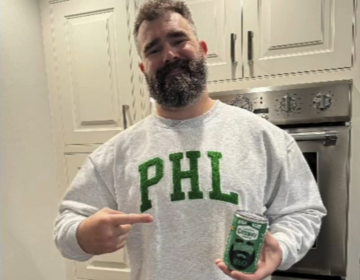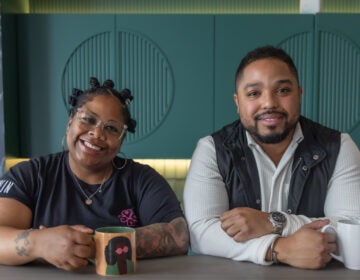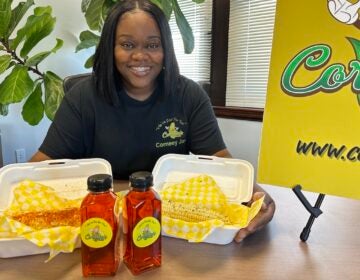Horn and Hardart is back! At least the coffee is
Listen 3:29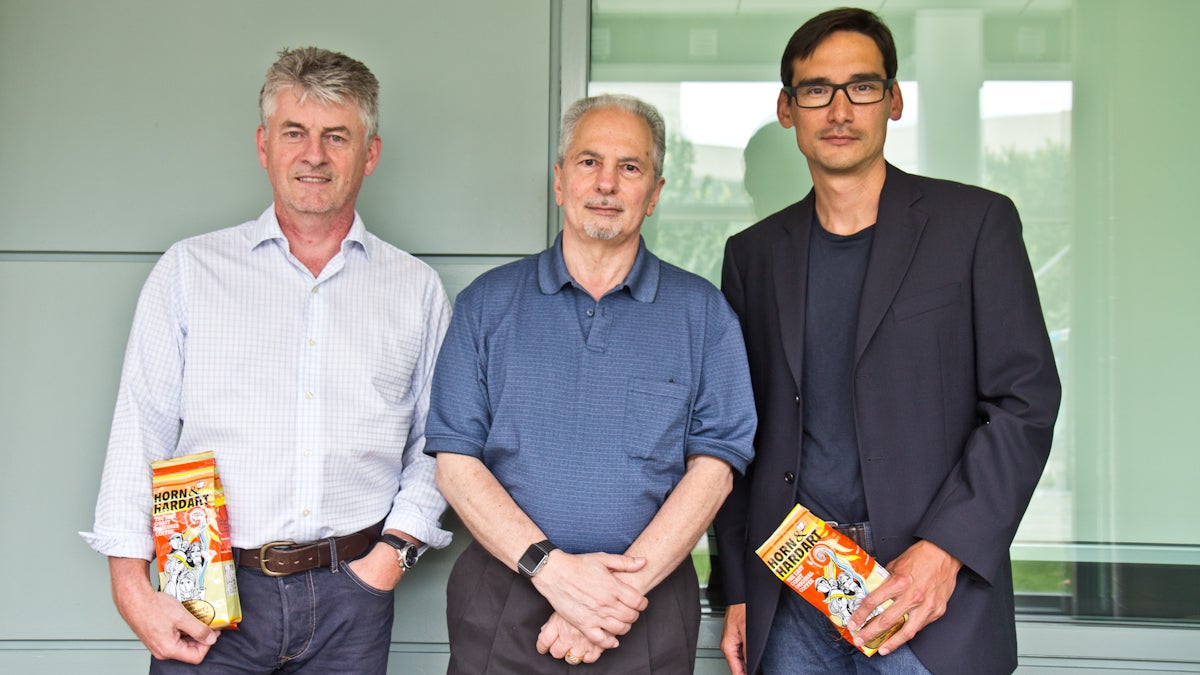
From left: John Tooher, Al Mazzone, and Dan Lievens are the men behind Horn and Hardart Coffee (Kimberly Paynter/WHYY)
Horn and Hardart was so popular in the mid-20th century that it was frequented by celebrities like Cary Grant and Marilyn Monroe, and featured in movies like 1937’s Easy Living. And you may not know that it was actually the name of the two-headed monster on Sesame Street.
But for Al Mazzone, growing up in Atlantic City, it was pretty much the only place the whole family could eat.
“We had so many relatives in Philadelphia and New York, when I was a really young kid, whenever we went to visit relatives, I think the only restaurant we ever went to was an automat,” said Mazzone, “Because especially in New York, it was a very large family and no one in New York had an apartment big enough to have 15, 20 people for dinner.”
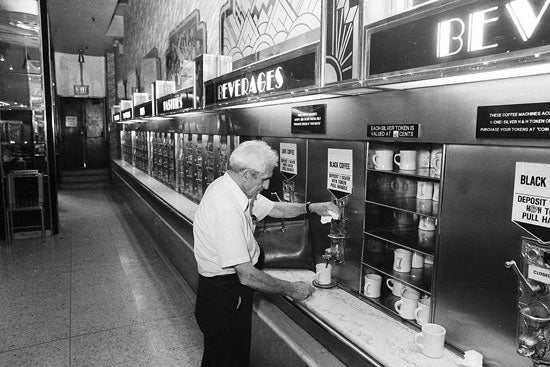
The stores first opened in Philadelphia in 1888 as quick-stop luncheonettes. Then in 1902 Horn and Hardart introduced the aforementioned automat-a glistening wall of tiny coin operated glass doors containing prepared food a-la-carte. Just drop in the coin, open the door, and take out your tapioca pudding, baked potato, or ham sandwich.
It was heaven for a kid like Mazzone, with a restless disposition.
“I didn’t like having to sit down at a table, having a waitress come over and having someone else, my aunts or my mother order for me and tell me what I had to eat,” he said.
Instead, his relatives sent him to the automat with instructions and a pocket full of change.
“So the first thing I would do is I’d go up and I’d get a slice of pumpkin pie. And then while I was going down getting the creamed spinach and everything else, I would eat this entire slice of pumpkin pie,” said Mazzone.
Mazzone’s nostalgia for the chain, shuttered now for nearly 30 years, prompted him to try to revive it somehow. An initial attempt at keeping the restaurant open in the early 90’s fell flat, so he looked to a part of the business that those of a certain age still remember: coffee.
“Horn and Hardart, when they first opened up the first location near 13th and Chestnut, they were really known for their coffee,” Mazzone said. “It was a small lunch counter, but they sold a lot of coffee, they were written up as having the best coffee anywhere that anybody had had, in this area at least, so it felt like a good place to start from.”
Mazzone experimented with blends himself until he found something that approximated the old Horn and Hardart’s drip coffee. Then he took on two other investors: John Tooher and Dan Lievens. Lievens, is a self-proclaimed coffee connoisseur.
“I used to roast my own, so the coffee quality had to be there for us to jump in,” said Lievens.
The company is now offering mail order coffee and will begin selling K-cups next month.
There’s also a documentary about the company in the works set to be released next year. While filming, Mazzone said, the group stumbled upon a woman who’s already become their most loyal customer.
“We by accident met someone, and her aunt was one of the last waitresses at Horn and Hardart in New York. And Helen just turned 101,” said Mazzone, “And the story is if Helen doesn’t have her Horn and Hardart coffee, you don’t want to have to deal with Helen, cause she can get a little testy.”
As for reviving the automat business, Mazzone said he’s not quite ready to open that door.
WHYY is your source for fact-based, in-depth journalism and information. As a nonprofit organization, we rely on financial support from readers like you. Please give today.


